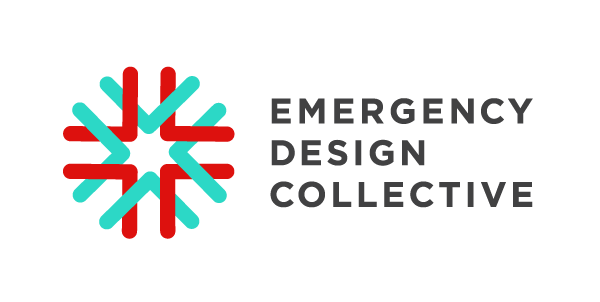Blood Donation in a Time of Isolation
PROJECT LEAD: Abbe Don
FOCUS AREAS: Blood Donation
WHAT WE’RE LEARNING
Today, many of us across the world are appropriately feeling a sense of urgency around the need for ventilators and protective equipment. While those are very real and urgent needs, there are other shortages gripping our frontline healthcare workers. In this time of social distancing, blood donors are avoiding giving blood, and in many cases blood drives are not happening at all. We find ourselves facing a major shortage of blood and blood products.
Abbe Don, an accomplished healthcare design leader, has been championing an EDC team looking into how we can help increase the blood supply in critical areas. Team members include seasoned designers and healthcare providers from across the country: Ben Alpers, Josh Feler, Katie Kirsch, Katie McCurdy, Jess Hawkins, and Eve Harris. So far, the team has been through a round of research and synthesizing insights, and they’re heading into brainstorming. Here’s what they’ve done and learned so far.
RESEARCH
The team spent a week learning more nuanced detail about the blood shortage problem. They spoke to blood service organizations and recruitment experts. They’ve spoken to regular donors, special donors (people who produce more platelets, for example), and people who are new to giving blood. They also scoured social media feeds and queried their networks to learn more about how people talk and feel about blood donation - especially right now.
A few research questions:
What are blood donation centers’ problems, needs and goals? What help do they want right now?
Why do people donate blood?
How do people become aware of the need to give blood?
How do people feel about blood donation right now, in a time of COVID-19?
To what extent do potential donors understand the urgent need?
How is the experience of making an appointment and giving blood? What is working, and what could be improved?
Some of the early findings and insights from the EDC team’s research.
[artwork by EDC member Katie McCurdy]
INSIGHTS ACROSS THE JOURNEY
The team put together insights and organized them according to the donor journey. They also created a visual of the donor journey and mapped out donors according to eligibility and frequency of donation.
The Donor Journey: Key touchpoints and opportunities across becoming aware, making the decision, and showing up to give blood.
Types of Donors: The team mapped out donors according to eligibility and frequency of donation.
BECOME AWARE
There’s limited transparency into what blood shortages exist, where, and why; many are not aware of shortages at all.
People feel powerless right now and want to be useful.
Social media is an effective awareness tool especially for first time donors.
Regular donors are “summoned” via email or phone; they are made to feel special.
Calls to action raise awareness but fail to set enough context or help people take the next step.
GATHER INFO
People want to know blood donation is safe and that appropriate COVID-19 precautions are being taken.
Healthcare workers and frequent donors seem to feel safer than new donors.
Eligibility criteria are unclear, confusing, and feel outdated.
SEARCH FOR & MAKE AN APPOINTMENT
The process to find a donation type, date and time is confusing, especially for first time donors.
The gap between urgent messages and wait times for an appointment leads people to disengage because they don’t think they are really needed. Donation centers fail to explain the importance of scheduling appointments into the future.
Usability issues with digital tools interfere with potential donors’ ability to efficiently get started.
DONATE
Walk-ins may be turned away, resulting in a bad experience - especially if they are turned away due to a preventable reason.
Social distancing is promised but not always executed well.
Processes and protocols vary across sites.
Based on these insights, the team put together a few key opportunity areas to address:
WHAT’S NEXT?
The team is moving into ideation - getting creative about ways to tackle these needs and insights. They are also hearing about very urgent current blood needs at some local hospitals, so they are regrouping to see if there is anything else they can do to help now. In the meantime, here six questions the team is focused on as they kick off brainstorming:
How might we help donors understand the ongoing demand for blood products?
How might we help everyone (not only eligible donors) help and build their donor identity?
How might we streamline the enrollment process and help new donors understand when and why they are needed?
How might we ensure donors who show up are eligible and prepared?
How might we equip blood services workers to design for varying perceptions / expectations around safety for the blood donation experience?
How might we celebrate blood services workers as heroes keeping donors safe in every step along the blood donation journey?
And here are some design principles to keep in mind while brainstorming:



![Some of the early findings and insights from the EDC team’s research. [artwork by EDC member Katie McCurdy]](https://images.squarespace-cdn.com/content/v1/5e72c382644e185374f64dbe/1585699705962-JCZ8LIYDGRWL4JXB6G60/Blood+Donation+Interviews+%7C+Themes+%7C+Insights+%7C+Opportunities.017.jpeg)



